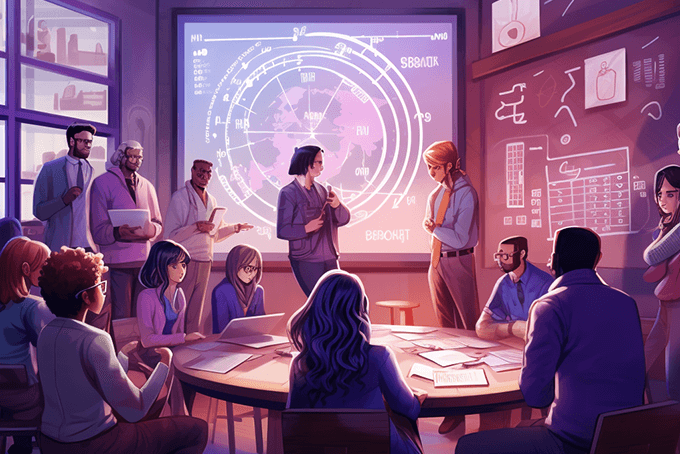
These days whenever I ask someone what they think of education, I never get a positive response. Everyone, however, can target something as the cause, usually blaming unions, parents, lack of money, or bad teachers (feel free to add your own).
The fact is that lots of people are trying to change education. The result is that a lot of money is spent… and very little changes at all. Here’s what I think is holding the entire edifice stagnant. It is our collective belief about what learning and teaching look like in school. Read the following and ask yourself if you believe that the elements of teaching listed below are essential to learning.
- Discipline – A teacher has to keep everyone quiet so students can “learn.
- ”Direct instruction – “Delivery” of content is the teacher’s job. Students just listen and take notes.
- Prescribed homework – Provides opportunities for practice and rehearsal and is necessary for mastering content.Identical content – All students have to learn the same things.
- The test – This is the prime motivator that is the purpose for all of the above. (Frankly, this is the only motivator for most students.)
- School environment – The school environment has to be organized in such a way that all of the above can happen.
I am declaring war on this model!
Why? This is not how any of us learn if we have even the remotest choice. Yes, learning includes some memorization of facts and skills, with input from a knowledgeable individual or resource, but real learning happens when students actually apply what they need to solve a problem or find a solution to something they deeply care about
Skeptical? Don’t believe me? If you have any young people around you, have you observed them spend hours on video games perfecting a skill? How about kids learning to master skate boarding? Or creating videos for YouTube?
If the project is interesting, challenging, and within their range of competence, they want to learn how to do it. With almost no encouragement, they’ll read about it, write to someone about a specific technique or practice, find experts to explain stuff, plan, and make something happen. And along the way they practice and practice. All of this can happen with or without a great deal of technology.
Does all of this deviate from a traditional teacher’s plan and usual way of doing things? You bet. Does it allow students to learn the same skills in ways that match their interests or work together on a problem as a group? Absolutely.
I have seen a student who always did minimal work in class and hardly ever spoke up, design a model stadium with all the details and critical functions in place. I have seen students rush for the dictionary to find a definition for “octagon” because they needed it for their project. I know kids who frequently spend hours on line with others on projects which include writing, math, planning, negotiating, and making critical decisions. And in the process they often document what they know and can do as others give them feedback on their work and ideas.
It takes a great deal to make this more flexible, learner-centered, approach work. Good teachers are critical. And the standards are still a main focus. But the entire process works differently. So what new model is needed? Our research shows that there needs to be a shift in primary emphasis:
- From maintaining discipline to creating community.
- From delivery of information to immersing students in experiences in which content is embedded.
- From practice and rehearsal to active and deep processing for meaning and understanding.
- From an inflexible and relatively sterile environment to an environment that supports experiential learning.
- From standardized tests to tests supplemented by performance assessment.
- From a curriculum based on externally driven “coverage” to one that includes student choice framed in terms of concepts and big ideas.
The critical question is whether or not we are ready to take a step and ask for and embrace the possible. I’m ready. I hope you’ll join me.



